Kanu Behl’s second feature, Agra (2024), offers a profound exploration of the human psyche, forcing the audience to confront struggles that hit close to home. In our increasingly crowded world, the desire for personal space, both physical and emotional, is universal. The film centers on Guru, a young man suffocated by the cramped conditions of his family home, where constant clashes with his mother and a refusal to share space with his cousin, Chhavi, intensify his frustration
Like Behl’s earlier work Titli, Agra casts a critical eye on patriarchy, but this time it dives even deeper, entwining themes of sexual repression and unfulfilled desires. Guru becomes consumed by the fantasy of a girlfriend who exists only in his mind, blurring the line between reality and illusion. But where does this imagined love lead him? Does he ever succeed in carving out a space of his own? To fully grasp Agra’s ending and its intricate themes, we must start by asking the right questions.
Spoilers Ahead
Agra (2024) Plot Summary & Movie Synopsis:
“Agra” opens with a surreal scene where Guru dines with his girlfriend, Mala. On the table, a rat is served as a kebab, creating an unsettling atmosphere. As the moment progresses, Guru starts having sex with Mala on the dining table. However, he soon notices something strange. Mala is actually standing far away, smiling at him, while the rat on the floor begins to move. In a disturbing turn, Guru realizes that he is not having sex with Mala but with a giant rat.
At this point, it is unclear whether Guru is dreaming or not. As the narrative unfolds, we eventually learn that Mala does not exist. Though Guru sees her at his workplace and even imagines having sex with her in an abandoned location, it becomes evident that all his interactions with her are purely the result of his imagination.
What Makes Guru Want to Kill the Doctor?
After accidentally ingesting finial during a blackmail attempt to force his parents to accept his wish to marry Mala, Guru’s fragile mind becomes even more unstable. Tied up by his father and confronted by a doctor who is there to help, Guru’s phobia of injections immediately triggers panic. His fear of the doctor escalates, creating a sense of impending threat in Guru’s already paranoia-infused mind.
The core of Guru’s aggression lies in his inability to accept reality. When the doctor tries to make him understand that Mala does not exist, it feels like an attack on the only source of comfort and affection he has — a fabricated relationship. The doctor’s insistence on confronting this delusion only heightens Guru’s anxiety and rage. In his eyes, the doctor becomes an enemy, threatening to strip him of the one thing that provides him emotional solace.
Guru’s violent outburst is a direct result of the doctor pushing him to confront his mental instability. Grabbing a nest containing his father’s second wife’s squirrel, Guru lashes out, attacking the doctor in a fit of anger. The death of the squirrel is an unintentional consequence of Guru’s actions. But it underscores his inability to comprehend the ramifications of his behavior. His lack of remorse for the squirrel’s death shows how deeply disconnected he has become from reality.
Why Does Guru Want to Build His Separate Room?
After enduring years of abuse from his father, including being locked in a bathroom at the age of 11, Guru has grown a necessity of his personal space with a sense of safety. The trauma of that confinement has left him craving a space of his own, free from others’ interference, where he can exercise control over his surroundings and escape the chaos of his household.
Guru’s loneliness and emotional isolation further fuel his desire for a private room. His mother’s revelation about the abuse highlights how Guru has learned to find solace in his solitude. The room represents more than just a physical space. It symbolizes a mental and emotional escape from the oppressive environment he has grown up in. The vacant space on the roof becomes an ideal place for him to finally build a sanctuary where he can be alone, away from family drama and judgment.
Another driving force behind Guru’s actions is his desire to stop Chhavi from opening her clinic on the same vacant roof space. His jealousy and possessiveness lead him to see Chhavi’s plans as an intrusion into the only place where he can assert his independence. By building his own room, Guru seeks to reclaim the roof for himself and prevent her from disrupting the privacy he desperately craves.
Why does Guru try to Sexually Assault Chhavi?
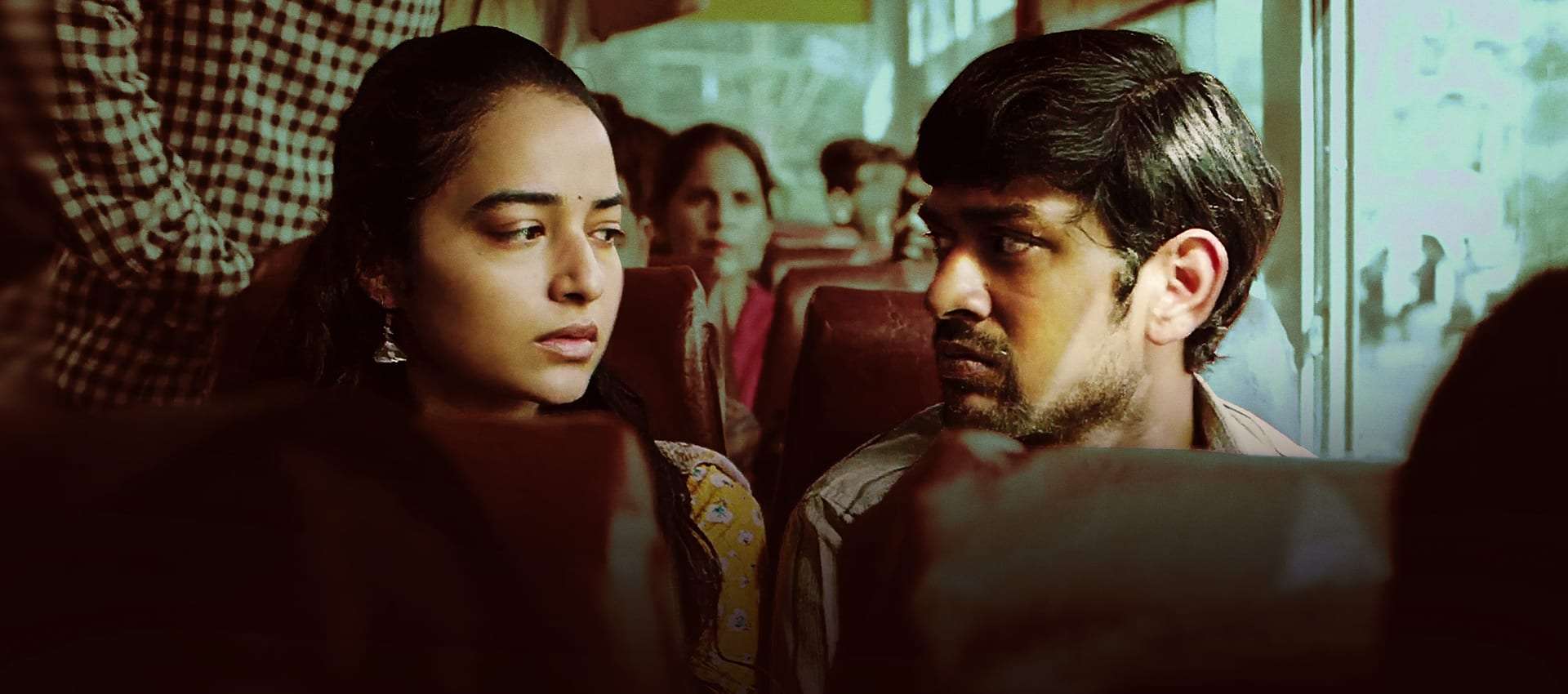
After a girl he is supposed to meet does not show up, Guru’s disappointment intensifies, leading to a breakdown. He locks himself away, crying in front of the mirror, overwhelmed by feelings of rejection and loneliness. His fragile mental state, shaped by childhood trauma and years of emotional neglect, causes him to spiral into despair.
Chhavi, aware of Guru’s past and his vulnerability, breaks into the room to console him. Her actions stem from a place of care and compassion, believing that by comforting him, she can help alleviate his pain. However, her kindness is misinterpreted by Guru. He is unable to distinguish between emotional warmth and sexual attraction due to his distorted perception of intimacy.
Guru’s sense of right and wrong becomes blurred during the interaction. His unresolved sexual repression drives his behavior. Hence, when Chhavi embraces him, he interprets her warmth as a sexual invitation. At that moment, Guru is not in control of himself. His desperate need for affection and comfort leads him to force himself on Chhavi. He is driven by an overwhelming impulse to satisfy his emotional and physical void, failing to respect boundaries.
Despite Chhavi’s attempts to escape, Guru’s overpowering emotions push him to pursue her. Later, when the situation is revealed, Guru’s mental instability becomes a key factor in how those around him respond. Guru’s deliberate attempt to try incest with Chhavi is a tragic outcome of his emotional breakdown and inability to process affection properly.
Is Priti’s Relationship with Guru Driven by Love or a Strategy for Survival?
When Guru and Priti meet, both are grappling with sexual repression, and their mutual attraction quickly turns into a physical relationship. While Guru sees Priti as a potential life partner and plans to marry her, Priti’s motives are far more practical. Having been married twice before and struggling to secure ownership of the cyber cafe promised by her second husband, Priti views marriage to Guru as a way to ensure her survival.
Priti’s legal battle over the cafe with her former husband’s sons puts her future at risk. As Chhavi reveals to Guru, Priti’s paperwork stands no chance against theirs, leaving her with limited options. Marrying Guru would give her not only a new home but also financial security, ensuring she can remain stable in the city despite her failed attempts to claim the cyber cafe.
Chhavi plays a crucial role in exposing Priti’s intentions. Though Guru had previously wronged her, Chhavi takes it upon herself to protect him from what she perceives as Priti’s manipulation. She highlights how everyone, including Priti, is after ‘the roof.’ Chhavi explains that Priti sees Guru as her way out of a difficult situation, not as a partner she genuinely cares for. At the same time, Chhavi’s own motives are not entirely selfless. She wants the open space on the roof to establish her clinic. This would grant her financial independence. Her intervention is as much about safeguarding her future as it is about protecting Guru.
Priti wants stability and security from Guru. While their relationship starts with mutual sexual repression, Priti’s true objective is survival in the city. Marrying Guru will definitely ensure her a place to live. Chhavi’s actions reveal the competitive nature of everyone’s quest for survival, making it clear that Priti’s intentions, though not necessarily malicious, are rooted in practicality rather than love.
Also Read: Agra (2023) Review: Uncoils itself with a seething, unnerving force
Agra (2024) Movie Ending Explained:
Guru’s Awakening: Taking Control of His Future Amid Family Deception
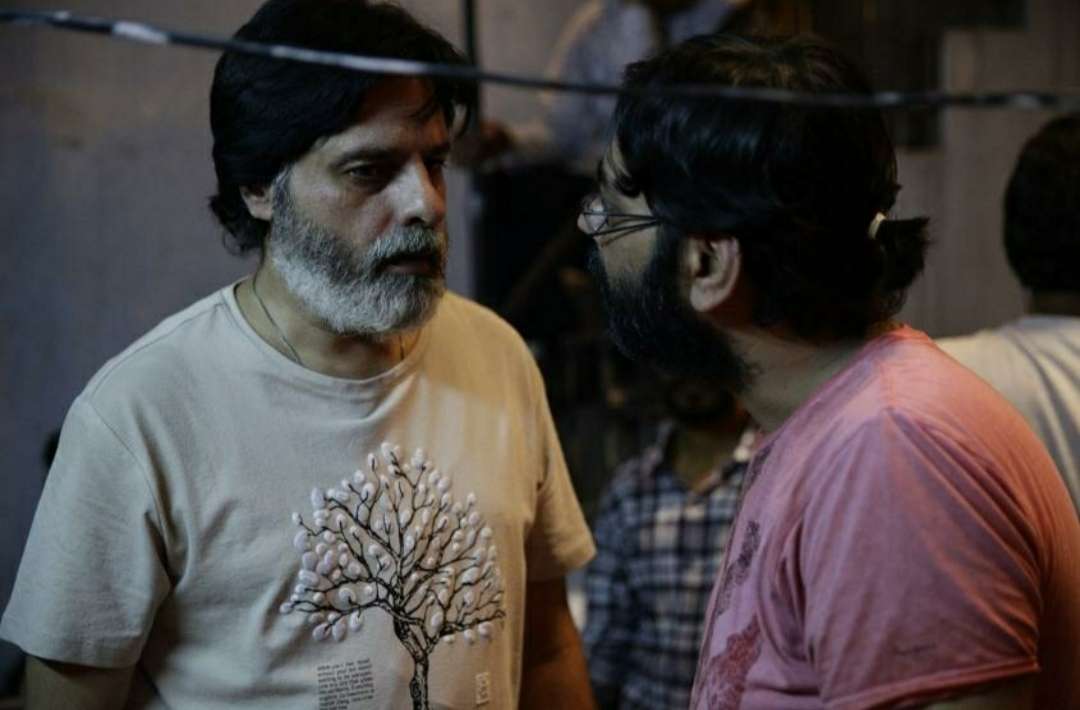
By the end of Agra, Guru understands that securing his own space within the house is directly linked to bringing a woman into the family, as his father did multiple times. Guru’s father’s third affair is revealed. The family confronts him, exposing his manipulative behavior. Despite his father’s attempts to use this third woman to arrange better living conditions for the entire household, the plan falls apart. This failure drives Guru to take control of his own future.
Recognizing that his girlfriend, Priti, will not be given the Cyber Cafe she desires, Guru decides to strike a deal with the builder himself. His actions mark a pivotal moment in his development, showing that he is no longer waiting for others to fix his situation but is willing to negotiate for his own benefit.
Guru, accompanied by his father and Priti, meets the builder and negotiates a complex deal. He proposes the construction of a five-storied building, offering two of the floors to the builder for his use, and agreeing to pay 7 lakhs in installments. This arrangement satisfies the builder and his father, who plans to open a stall. The deal ultimately transforms their home into a multi-storied structure, providing Guru with the separate room he longs for.
This room symbolizes more than just physical space. It represents Guru’s desire for independence and validation within the family. For the first time, he asserts himself as someone capable of making decisions that benefit both him and his family. As the house is renovated, Guru’s parents and Chhavi accept Priti into the family. While the outcome of Chhavi’s clinic is left uncertain, her contentment with the new arrangement suggests that she is satisfied with the stability Guru has brought to the household. This acceptance of Priti and the completion of the new home signifies a moment of harmony within the family.
In the final scene, Guru roams inside the newly constructed flat, where he encounters Mala once again. She urges him to forget the past and start fresh. This moment reveals that despite the newfound stability in his life, Guru’s delusions persist. Mala’s reappearance highlights the unresolved psychological issues that continue to haunt him. However, unlike before, Guru now understands that her existence must remain hidden from the world, as those around him are aware she is not real.
Guru’s journey to obtaining his own room reflects his growing independence and his ability to take control of his life. The deal with the builder and the acceptance of Priti into the family marks a turning point in his character, allowing him to claim both physical and emotional space. However, the reappearance of Mala suggests that while Guru may have found stability, his inner turmoil remains unresolved, hinting at a deeper struggle with his identity and desires.
Agra (2024) Movie Theme Analysed:
What is the Meaning behind the Montage of Colors?
Kanu Behl’s “Agra” revolves around sexual repression, psychological trauma, and distorted perceptions. Guru, the protagonist, navigates a world full of mental scars from his childhood trauma. The montage of colors serves as a visual metaphor for the chaos inside Guru’s mind. These colors, interspersed throughout critical moments in his life, reflect his inability to process the world around him in a rational manner.
Since his traumatic incident at the age of 11, Guru has been cut off from reality. His distorted behavior, impulsive reactions, and inability to handle emotional situations; such as drinking finial after his parents’ argument, demonstrate his constant need for attention and validation. The colors, which repeatedly appear during these moments, embody the unresolved emotions and mental fragmentation he suffers from.
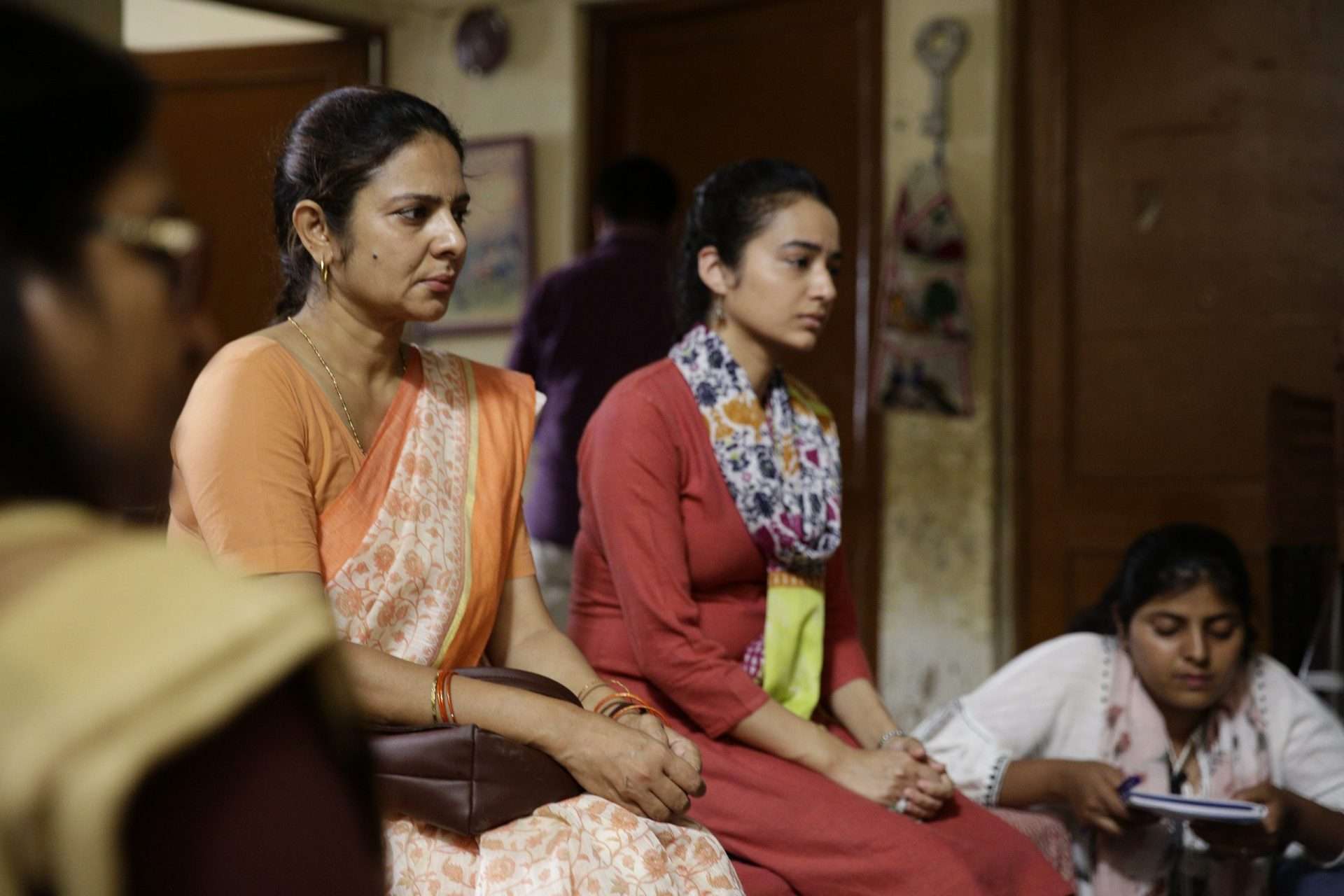
Guru’s Descent into Fantasy and Inner Turmoil
The first time we encounter the colors is when Guru imagines having sex with his imaginary girlfriend. This sets the stage for how colors symbolize his fantasies and internal conflicts. When Guru threatens Chhavi, pretending to be someone else, we again see the colors just before his warped sense of dominance takes over.
The colors recur before Guru’s attempt to kill the doctor, who tries to break the illusion of Mala, his non-existent girlfriend. These moments of extreme emotional distress show how Guru’s conscious mind merges reality with fantasy, with the colors acting as a representation of this mental confusion.
The colors also appear when Guru faces rejection, such as when an online girl fails to meet him in person. This humiliation drives him to attempt incest with Chhavi. In each of these instances, the colors portray his inner world being torn apart by conflicting emotions and desires. It’s as though Guru is surrounded by society’s opinions, judgments, and expectations – each represented by different colors that fail to merge or provide clarity.
Do the Colors in Agra Signal Guru’s Path to Liberation or a New Form of Delusion?
In the end, when Guru decides to bring Priti to his family, the colors begin to act less chaotic. For the first time, Guru seems to be asserting his will over the external world, rather than being a victim of it. The colors no longer clash. They blend more harmoniously, symbolizing Guru’s newfound clarity and resolve. Priti, though a complex and potentially manipulative character, serves as the catalyst for Guru’s acceptance of himself. Through her, Guru makes a decision that is entirely his own, no longer swayed by others’ expectations or the chaos inside his mind.
The montage of colors in “Agra” symbolizes the turbulent thoughts and emotions swirling in Guru’s mind. From moments of humiliation and rejection to self-assertion, these colors reflect his journey from confusion and repression to a form of emotional clarity. By the film’s end, the colors represent not just his internal chaos but his eventual liberation from societal judgment.
How Guru’s Father’s Sin Falls Upon Him?
In “Agra,” Kanu Behl explores the theme of how a father’s sins influence his son’s life. Guru’s father, a man with a series of failed relationships, is an absent figure in Guru’s upbringing. His actions deeply affect Guru’s psychological development. Guru’s father brings multiple women, yet never provides the emotional support his family needs. Though he does not abandon them physically, his emotional absence sets the stage for Guru’s own struggles with relationships and repression.
The father’s unresolved sexual repression is mirrored in Guru’s actions. His father’s second ‘woman’ is not a legitimate partner but merely someone to fulfill his sexual needs, reflecting his own emotional detachment. Similarly, Guru’s second interaction with a woman leads to attempted incest, driven by the same sexual frustration and lack of emotional intimacy.
Guru’s relationships reflect the failed patterns of his father’s life. Guru falls in love with Priti, a woman who has been married twice, just as his father brings multiple women into his life. Guru becomes the third husband to Priti, mirroring his father’s repeated attempts to find stability through different partners. Both father and son are trapped in a cycle of failed relationships and emotional repression. However, where the father fails to find peace or create harmony, Guru’s relationship with Priti offers a glimmer of hope for change.
Does Mala Actually Exist?
In “Agra,” the question of whether Mala exists is central to understanding Guru’s mental state. Though Mala appears to work in the same office as Guru and shares brief glances with him, her true existence remains ambiguous. Mala may physically exist. But her role in Guru’s life is largely a projection of his desires and fantasies. She becomes the embodiment of his sexual repression, a fantasy created by his mind to cope with the isolation and abuse he suffered during childhood.
Guru’s inability to form real connections with women leads him to create an idealized version of Mala. In his imagination, she reciprocates his feelings, becoming a symbol of the emotional and sexual fulfillment he craves. However, in reality, it is likely that Mala never truly notices Guru, viewing him as just another guy from work. His deep yearning for love and attention, coupled with his vast imagination, causes him to blur the lines between fantasy and reality.
Mala represents both a real person and an illusion in Guru’s mind. While she may physically exist, her presence in his life is largely fabricated. Agra uses Mala to highlight the destructive effects of sexual repression, showing how unaddressed desires can distort reality and create unhealthy mental patterns. Sexual repression is always there. Kanu Behl’s “Agra” only asks the question louder: how long are we going to ignore its existence?



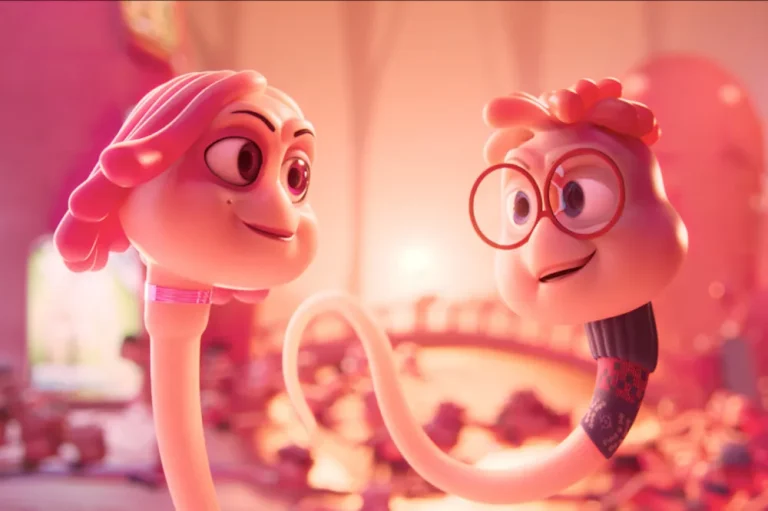
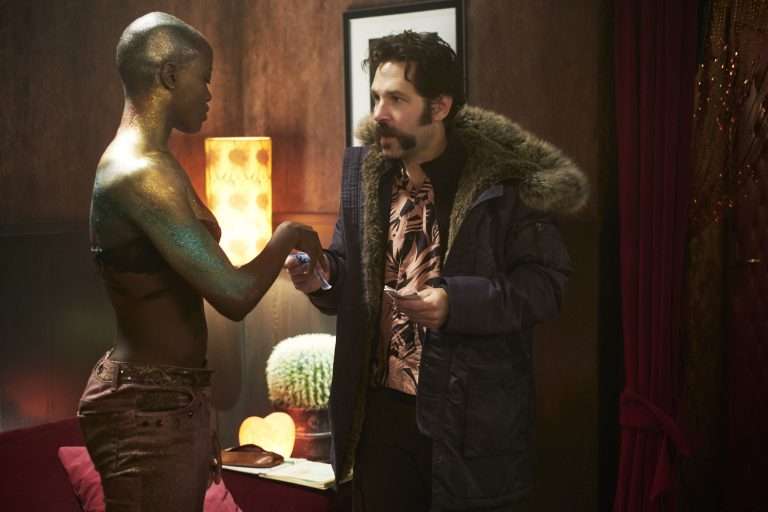

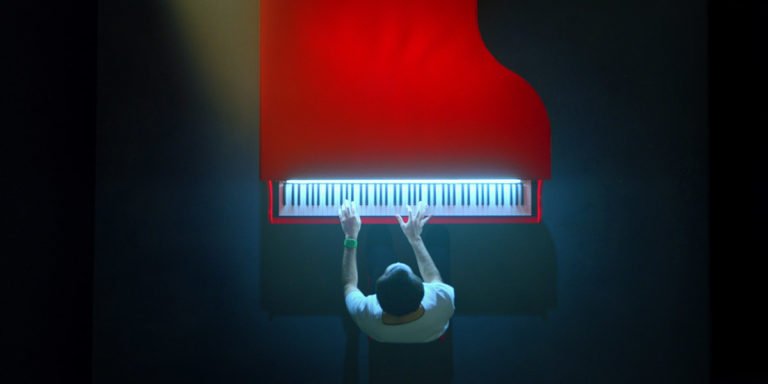
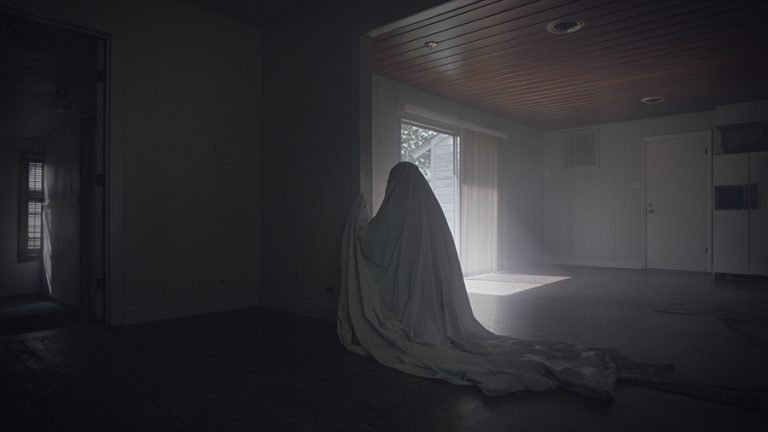
Hi, nicely written, read most of it. My concern is the scene at teh end is a bit boggling. They show those five stories but also show this under-construction building. What has happened, is it that only facade is perpared and behind that work is going on or what don’t know, But still in the end they made me doubt his sanity and the whole negotiation scene. I would like to believe your description that these are inner desires that still not satisfied and haunt him, but not sure.